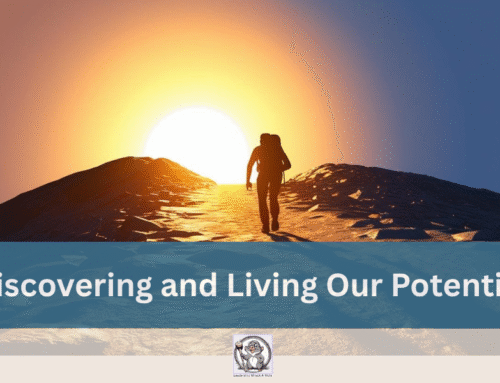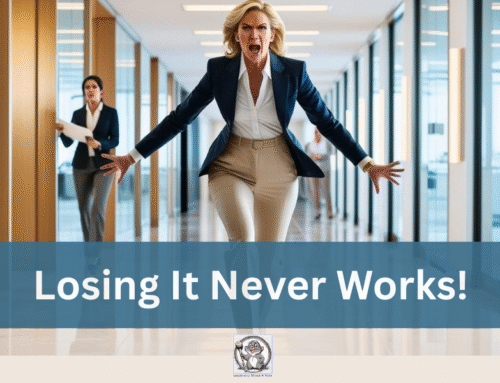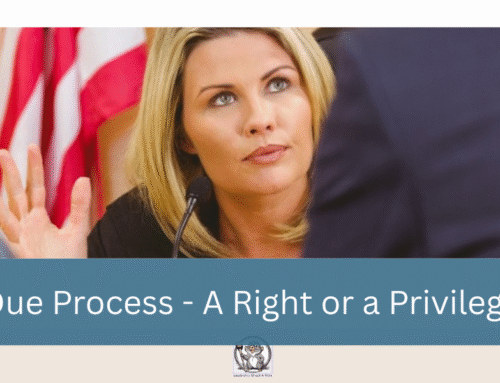
By Ric Shriver
I grew up in West Des Moines, Iowa. The house where I spent most of my childhood was on Vine Street, and most of my childhood friends lived within a block or two of my home. Like Vine Street, the “east-to-west” street names were named after familiar landmarks or vegetation, and the “north-to-south” streets were conveniently numbered in an orderly fashion from 1st to wherever the expansion of the neighborhood had reached. Schools, churches, parks, and recreational facilities were all within a short bike ride from my home, and our daily schedules were consistent, comfortable, and manageable.
The people and families in my neighborhood lived predictable lives. They grew up in the same town, married their junior high and/or high school sweethearts, raised their families close to where they had been raised, and secured predictable, stable jobs in predictable environments. Life was good! Rapid and unpredictable change was essentially non-existent, nor was it welcomed! To this day, most of the friends, families, and other close relationships I had during my childhood have remained in or near to West Des Moines.
I left West Des Moines, moving to North Carolina with my family following my 9th grade school year. I discovered quickly that the culture and predictability of West Des Moines was unique. The cultures I have been employed in, formed relationships in, and have navigated throughout my adult life have been anything but predictable…or comfortable. My observation is that most of the industrialized world does not resemble West Des Moines, and that rapid changes in our geographic and business cultures are a certainty. I am also certain, and have been advised, that West Des Moines is not the quiet, stable little community that I grew up in.
The contrast I raise between West Des Moines and the environments I have been exposed to throughout my adult life sparks an internal, emotional debate about the way we as human beings respond to all types of change. As leaders, it raises the question about how much change and how frequently we initiate change in our businesses, given that our natural human instinct is to grasp predictability, stability, and emotional comfort. We can recognize that our competitive environment continues to change, our customers and clients’ expectations continue to change, and that if we do not respond appropriately to those changing conditions, we potentially risk losing our businesses and sources of income. But as leaders, and as members of any organization, we naturally resist change and yearn for greater predictability. The people we lead have similar sentiments. So, what are we to do?
In the popular fable Our Iceberg is Melting, written by John Kotter, a community of penguins is faced with a disruptive penguin named Fred who is convinced that the iceberg they have called home for many generations is beginning to melt. Fred must convince several others in the penguin community that drastic change must occur, or they will lose their homes, their belongings, and ultimately their lives. But the challenging question for the penguin community is “how can we possibly surrender the place we have called home for so many generations based on the information being presented by Fred and his handful of collaborators?”
Kotter introduces an eight-step model for change that reflects how the penguin community reached a consensus that finding a new iceberg, a new home, and a new way of life was an imperative. The model outlines the following key foundational steps:
- Create a sense of urgency
- Pull together the guiding team
- Develop a change vision and strategy
- Communicate for buy-in and understanding
- Empower others to act
- Produce short term wins
- Don’t let up
- Create a new culture
As you read through the fable, these steps are documented in an entertaining way. But I place emphasis on the word “entertaining”, because I am not certain that the steps outlined are how leaders and organizational teams realistically manage and respond to change. A model that I have used more recently in my career capacities is one that, in a dynamic and not necessarily linear way, incorporates the following key components:
- Information – addresses what data, intel, and general information is sparking the need for change.
- Magnitude – addresses the question of how significant the change being considered needs to be.
- People – addresses the question of who the primary people are initiating, facilitating, and most importantly being impacted by the change.
- Actions – addresses what key steps need to be taken to successfully implement the change.
- Consequences – addresses both the positive and negative outcomes that can be anticipated and planned for because of the change.
- Communication – addresses the kind and timing of the communication that will be needed to successfully introduce, initiate, and implement the change.
- Timing – addresses the appropriate timeframe for implementing the change.
I have referred to this model and framework for change as the IMPACT model. Jeff and I elaborate on the model in Leadership Whack-A-Mole. The model suggests that the sponsors of any change involve themselves in serious, transparent discussions about the questions raised by each of the components. The intent and hopeful outcome of those discussions will objectively answer the following questions:
- Is the change needed?
- If so, what should the master plan for change look like?
- Who will be the key players in the change process – sponsors, facilitators, champions, agents, resources, educators?
- What will be our primary measures for success…or failure?
- What are the potential rewards for successfully implementing the change?
- What are the potential risks?
- How will we know when or how we might need to alter our plan?
Our nation is currently faced with a huge financial crisis. We are nearly $37 trillion in debt. Our annual budget deficit as a nation exceeds $2 trillion. The annual interest payment on our existing debt is over $1 trillion! Most economists and financial experts agree that if these conditions are not drastically altered soon, the country will collapse into bankruptcy. So, the answer to question number 1 above is a definite “yes!”
The national debate now occurring around questions 2 through 7 are dominating the media, thousands of business roundtables, American family dinner tables, organized street protests, and the list goes on! We are losing sleep and dividing ourselves as a nation. In the last national election most voting Americans said “yes” to moving forward with the cost cutting. But we are at odds about what needs to be cut, how it needs to be cut, when the cuts need to occur, and who will do the cutting! Unfortunately, millions of people throughout the world have grown accustomed to the current state, and they are reluctant to derail the status quo. As human beings, once we get comfortable with “the way things are” we tend to resist “what ought to be!”
As I think about the personal and organizational changes that I have been impacted by, have been asked to help facilitate, or have been the primary leader for, I challenge myself to ask the first question cited above – “Was the change needed?” I reflect on the community where I was raised and how I moved away from that community early in my life. I wonder what impact that relocation had on the rest of my life, personally and professionally. As leaders, we are charged with initiating and supporting multiple changes within our respective businesses. Most of us can consider previous changes, current changes, or planned changes as necessary or unnecessary. The truth is that all of us have unique opinions about the necessity of change. Yet, regardless of our perspectives on the changes, as leaders we must either lead, facilitate, or engage in the change in a meaningful way. If we cannot assume a supporting role in the change initiative, after diplomatically voicing our opposition to the change, we should ask ourselves how we can maintain objectivity while remaining calm.
In conclusion, for our organizations and our careers, we must consider our personal values before embarking on or supporting a significant change. We should be compelled to ask how the anticipated outcomes of a career change might align with our personal values. As leaders, we should ask ourselves how the outcomes of a planned organizational change will align with the spoken and supported values of the organization. Again, there are no firm answers to either of these questions, but they do require serious consideration, discussion with close and trusted advisers, and honest acknowledgement of what truly gives us a sense of personal and professional peace.




